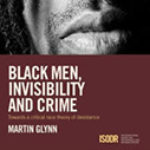IMPLIED CONSENT AND SEXUAL ASSAULT: INTIMATE RELATIONSHIPS, AUTONOMY, AND VOICE

Author: Michael Plaxton
Publisher: Montreal: McGill-Queens University Press, 2015. 280p.
Reviewer: Melanie Clark Mogavero | January 2017
In Implied Consent and Sexual Assault…, Michael Plaxton analyzes the complexity of the Canadian sexual assault statute by drawing upon landmark Supreme Court of Canada cases as well as the works of legal and feminist theorists. Although Plaxton explores Canadian law only, the legal and moral concepts and opinions in this book apply to similar statutes in the U.S. and other Western countries. Through his comprehensive analysis, Plaxton offers compelling support for the inclusion of the (problematic) doctrine of implied consent.
In the “Introduction,” Plaxton lays out the groundwork for answering the question of whether the doctrine of implied consent has a role in sexual assault cases. Plaxton draws upon the landmark Supreme Court Case R. v. Ewanchuk (among several others) in which the defense introduced the doctrine of implied consent. This concept states that a victim is presumed to have consented to sexual activity if, at the time of the act, she appeared to subjectively consent (whether or not she actually did). The victim and Brian Ewanchuk had a business relationship in which she viewed him as a potential employer, and she had only met him on the day before. The victim consented to non-sexual touching, but when Ewanchuk began to touch her in a sexual manner, she said “no” and asked him to stop. He ignored her protests and continued his sexual advances. The victim eventually submitted in fear that he might become violent. The Supreme Court rejected the application of implied consent in this case on the grounds that Ewanchuk did not take “reasonable steps” to obtain consent.
In chapter 1, Plaxton argues that the role and function of criminal law in society is to teach and communicate the boundaries of permissible behavior or social norms. There is a reciprocal relationship between laws and social norms. Social norms shape criminal law, and criminal law shapes social norms. The offense of sexual assault communicates to society what forms of sexual behavior are wrong and must be discouraged. The author argues that the role of criminal law is not only to punish, but rather that the expectation is that members of society should obey the law regardless of whether criminal sanctions are applied. In other words, knowing the law, law-abidingness and self-regulation are obligatory. Particularly with an offense of sexual assault, there must be a separation of the “teaching function” from the threat of punishment, as such crimes are often unreported.
The Canadian Parliament has passed several legislative reforms that increased the respect for women’s sexual autonomy, which included redefining sexual assault as a violent offense and removing the marital exception. Chapter 2 details the legislative change from “rape” to “sexual assault,” as the offense was deemed a crime of violence, not a sex offense. The change also criminalized a wider range of non-consensual sexual behaviors. By removing the sexual aspect, the law also shifted the coding from being a moral crime to a violent crime. Plaxton also links rape to the objectification of women and to the historical view that female sexuality is a commodity to be bargained for. In essence, men who lack the capital to “bargain” for sex (i.e., to successfully seduce a woman) may feel the need to resort to violence or coercion; which in turn may lead to rape or sexual assault. The offense of sexual assault also addresses violations of sexual integrity and autonomy. Women should be able to explore their sexuality (autonomy) while being free of violations of their integrity.
In chapter 3, Paxton explains why the Supreme Court rejected the doctrine of implied consent in the Ewanchuk case. In Ewanchuk, the majority opinion stated that the victim’s state of mind is irrelevant. Further, implied consent has no place in Canadian law since the idea behind it is largely based on gender social norms, which in turn reflect gender stereotypes about how men and women are “supposed” to behave. Deciding whether a victim consented, or the perpetrator incorrectly assumed the victim was a willing participant, is often based on a set of stereotypical sexual norms. Since Ewanchuk and the victim had no prior relationship other than a professional one, the use of implied consent in this case would assume that women, at any time, are sexually available to men, even during a job interview. Any opposition to the assailant’s advances would be interpreted as her way of displaying coyness, as women are “supposed” to be sexually submissive, and not “supposed” to behave as sexual aggressors.
Plaxton further explains the concept of implied consent by comparing it to “body checking” in the game of ice hockey — a scenario he refers to throughout the book. Checking, sometimes referred to as “hitting,” is when a player drives his upper body into an opponent to knock him against the boards or to the ice in order to separate him from the puck. A player typically does not know if or when he is about to be checked, and therefore does not have an opportunity to provide consent. One can imagine that no player “wants” or consents to be checked: but merely agreeing to participate in the game implies his consent.
Plaxton describes the significance of consent with regard to various social interactions and the involvement of social coordination. Often what differentiates legal from illegal behavior is consent (social coordination). In other words, the lack of consent can transform a seemingly benign behavior into a criminal behavior (e.g., theft or trespassing). The author then begins to make a case for implied consent because seeking consent in some social interactions on an ongoing basis would be cumbersome and unnecessary. With regard to sexual behavior, obtaining contemporaneous consent would essentially eliminate any spontaneous physical affection between intimate partners or prevent couples from engaging in sexually exploration.
Chapter 4 refers to Section 273.1(1) of the criminal code, which defines consent as “the voluntary agreement of the complainant to engage in the sexual activity in question.” This section was designed to advance sexual autonomy, as consent and capacity to consent are mental states experienced only by the victim. The question becomes whether one’s autonomy is restricted if one is bound to previous agreements or decisions (i.e., prior consent). Section 273.2(b) imposes a test of reasonableness, which shifts the focus from the perpetrator’s motive or belief, and requires that he take reasonable steps to obtain consent. However, this test of reasonableness is vague and open to subjective interpretation. Referring again to the (public) hockey analogy, with regard to implied consent in the (private) sexual realm, there are no steadfast rules, no spectators, and no referees to determine what is reasonable and what is not.
In chapter 5, Paxton expands upon chapter 2 and the wrongfulness of sexual objectification of women. Drawing from Nussbaum, Paxton discusses how the presence or absence of mutuality determines whether sexual touching is objectifying or instrumentalizing. According to Plaxton, Nussbaum describes several ways in which one can be objectified (i.e., to become a tool for someone else’s purpose). However, not all objectifications are morally objectionable: depending on the context, they may even be an exciting aspect of sexuality. The context is imperative; sexual behavior that occurs with mutual agreement and respect determines the moral significance of the sexual behavior.
In chapter 6, Plaxton argues for the use of implied consent in sexual assault cases, which involves drawing boundaries around its use. Drawing from the work of Chambers, Plaxton explains what is meant by first-order and second-order autonomy: first-order applies to one’s attitude towards rules or norms, while second-order applies to the manner in which one comes to engage in certain behaviors. Plaxton refers to the terms, “exit” and “voice” as the extent to which one is free to abandon his or her chosen way of life. With regard to intimate relationships, one has second-order autonomy when he or she is able either to remain or leave the relationship, and first-order autonomy when he or she may exit and has the ability to consent to every sexual encounter. Where there are exit and voice in a mutual relationship, the doctrine of implied consent can be recognized (as long as one can distinguish between sexual behaviors that comply with criminal law, and those that do not).
In chapter 7 titled, What is Stereotyping? Paxton draws again upon chapter 2. The Supreme Court rejected the use of implied consent in Ewanchuk, in large part because the concept draws on the gender stereotype that women are sexually passive and are supposed to surrender to men’s sexual advances; as a result, unless a woman protests or resists, she consents. Drawing on the work of MacKinnon and Haslanger, Paxton explains sexual objectivity and objectification and their role in stereotypes and voice. When women are objectified, they have no voice, and therefore when they do speak, they are ignored. Paxton concludes the chapter by describing how reinforcing gender stereotypes can result in criminal wrongdoings.
In chapter 8, Plaxton refers to the 1983 Canadian Parliament’s legislative Marital Rape Exception reform, a groundbreaking triumph for women’s rights and women’s sexual autonomy. In accordance with this reform, intimate relationships, including marital, have no bearing in the law. Plaxton details the significance of the context of the relationship, in that not all marital relationships are intimate, and marriage in a sense, is merely a label. Women choose to marry or remain married for various reasons: ongoing intimacies cannot be assumed. In sexual assault cases, one must examine the specific context and norms of that particular relationship (which are often not static), and whether it was based on mutuality and respect. Plaxton states that when the Canadian Parliament drafted Section 273.1(1), the intention was to eliminate implied consent, particularly with the inclusion of Section 273.2(b) “reasonable steps” requirement. However, the legislation focused more on “date rape” than marital rape, with greater emphasis on “rape” as opposed to “sexual assault,” advancing Plaxton’s support for the use of implied consent in certain cases.
In chapter 9, Plaxton highlights the importance of women’s sexual autonomy, and the value of women’s ability to freely express their sexuality without the threat of being treated as a sexual object. Laws governing sexual behavior should serve to vindicate women whose sexual integrity has been violated and to protect vulnerable groups. Reflecting from chapter 6, Plaxton revisits the role of autonomy and choice. In order for one to have (real) autonomy, he or she must have choices or the ability to choose different options, and to not have their choices limited due to life circumstances. This makes some persons more vulnerable than others, who thus require greater legal protections.
Plaxton also discusses the problem of being overly broad in sexual assault laws, as it would be virtually impossible to draft a law to only target a specific wrongdoing. Other forms of sexual touching will be “caught” with a broader definition. He also discusses legal breadth with respect to implied consent, as it may offer a defense for those accused of sexual assault and maybe used by some who are undeserving. However, Plaxton believes that offering implied consent helps sexual assault laws from becoming overreaching. This may offer women protection from violations of their sexual integrity, while still allowing them to explore their sexuality (sexual autonomy). The author concludes that the doctrine of implied consent has a role in sexual assault law, as it allows couples to explore their sexual autonomy and other sexual possibilities without undermining the deterrent effect of criminalizing sexual assault offenses.
Implied Consent and Sexual Assault crosses several social disciplines, and will interest a vast audience, including feminist advocates, lawyers, legal analysts, criminologists, sociologists, psychologists, social workers, and professionals involved in sexual assault prevention and victim services. It is a valuable legal and reference source for those interested in sexual offense legislation.
Melanie Clark Mogavero, Ph.D., Assistant Professor of Criminal Justice, Georgian Court University


